Abstract
Six homing pigeons were trained on a variety of concurrent-chains schedules in which the initial links were equal variable-interval schedules and the terminal links were fixed-interval schedules. Both terminal-link and initial-link schedules were systematically varied. The results showed that preference for a particular terminal-link schedule combination was greater, the shorter the initial-link schedules. The data closely matched predictions from the model of choice suggested by Davison and Temple (1973), but did not match predictions from two other models. An alternative method for analyzing concurrent-chains performance by assuming that the schedule consists of both chained schedules and successive, discriminated components that comprise multiple schedules, was suggested.
Full text
PDF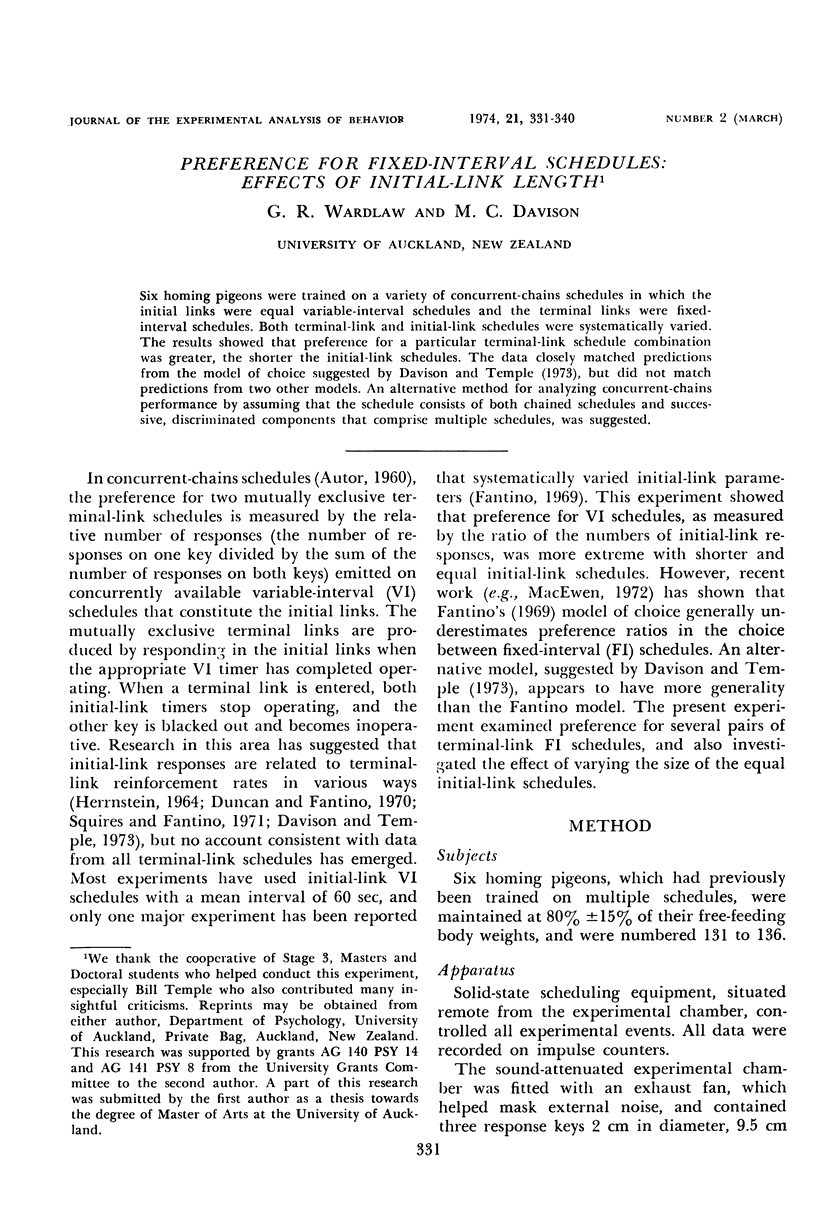
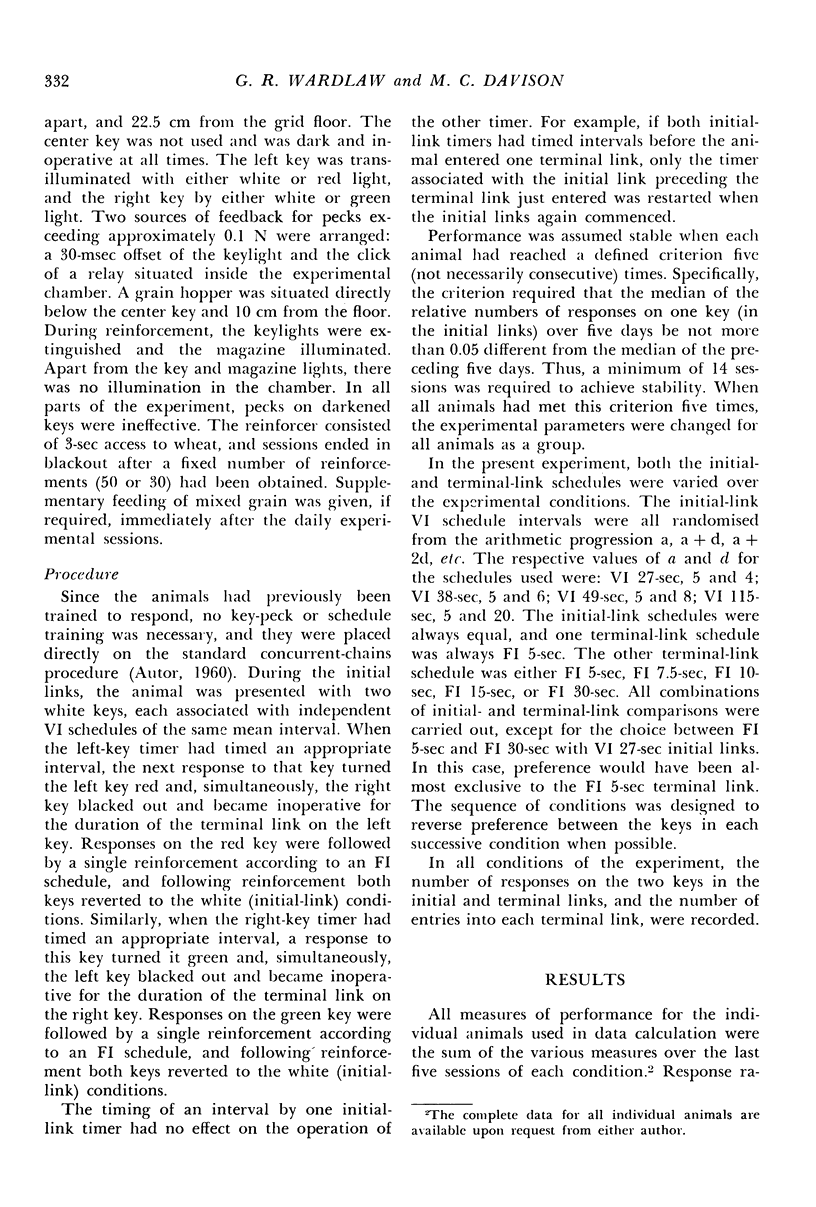

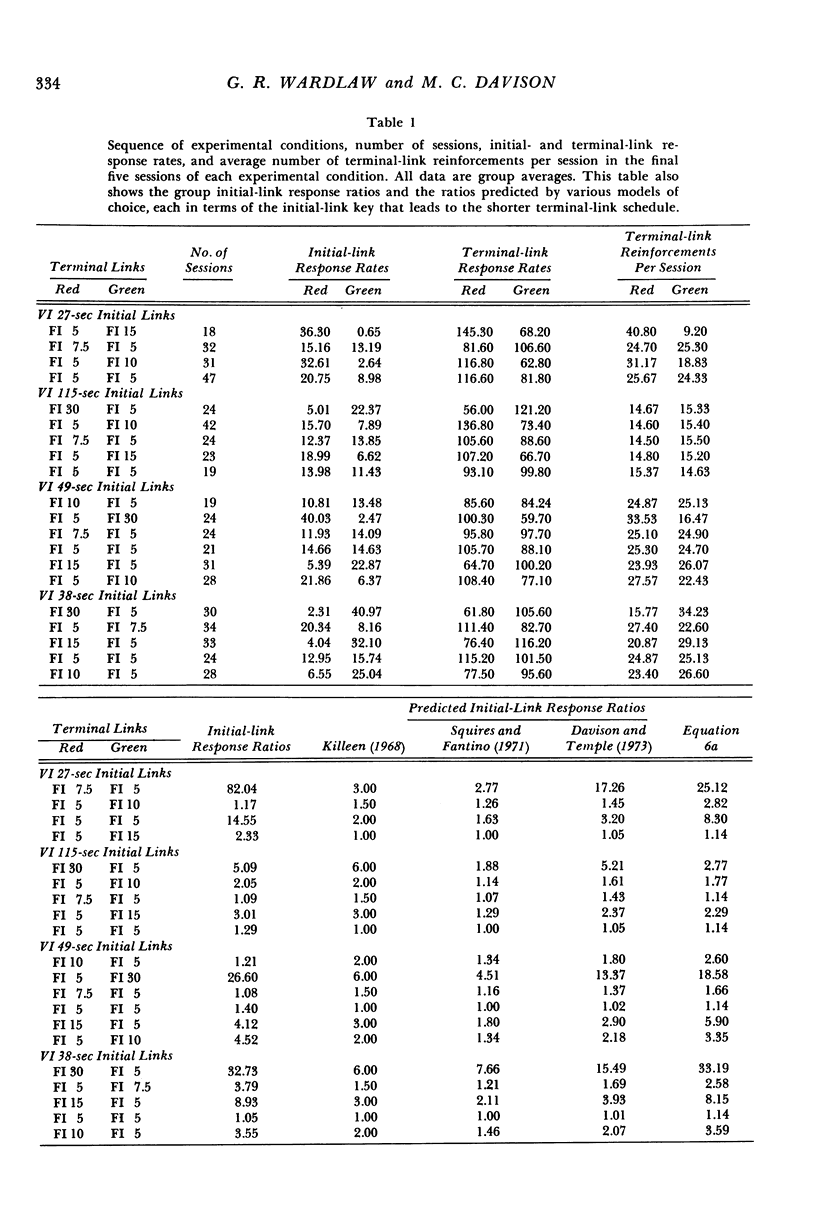
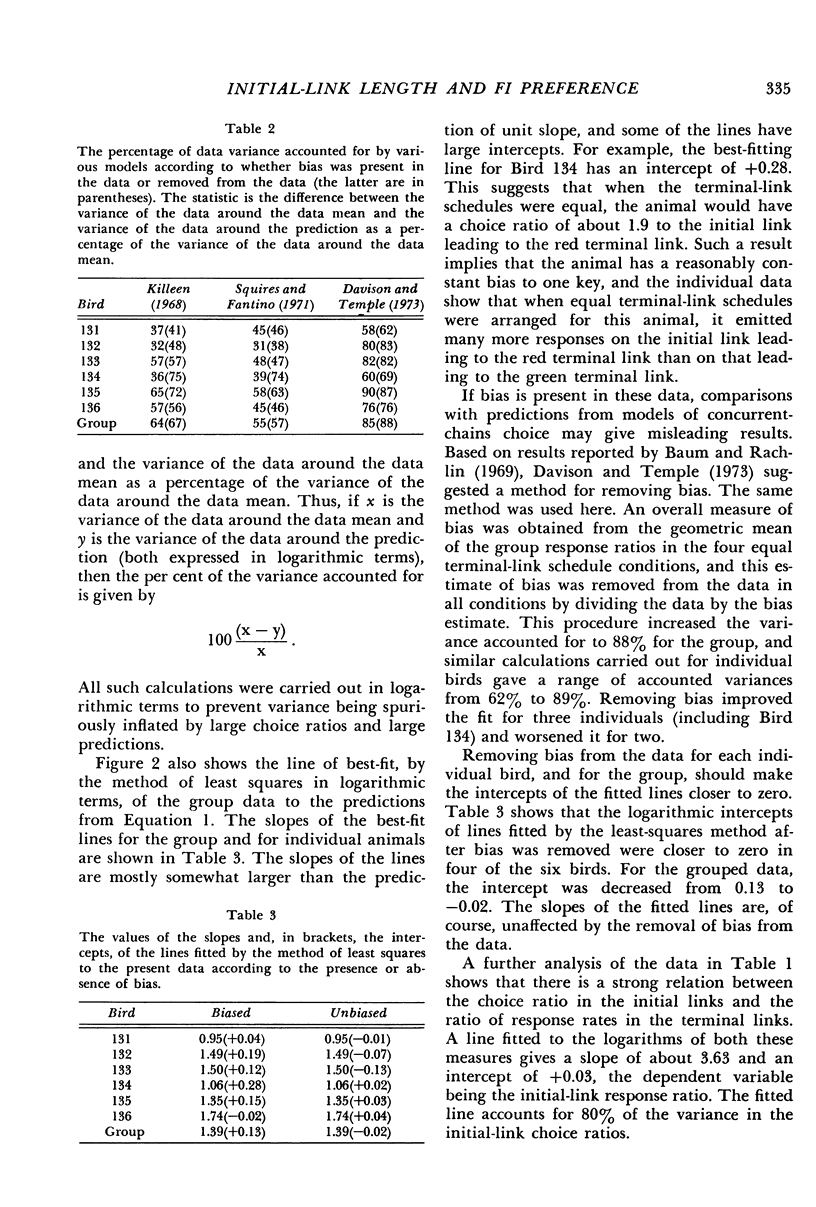
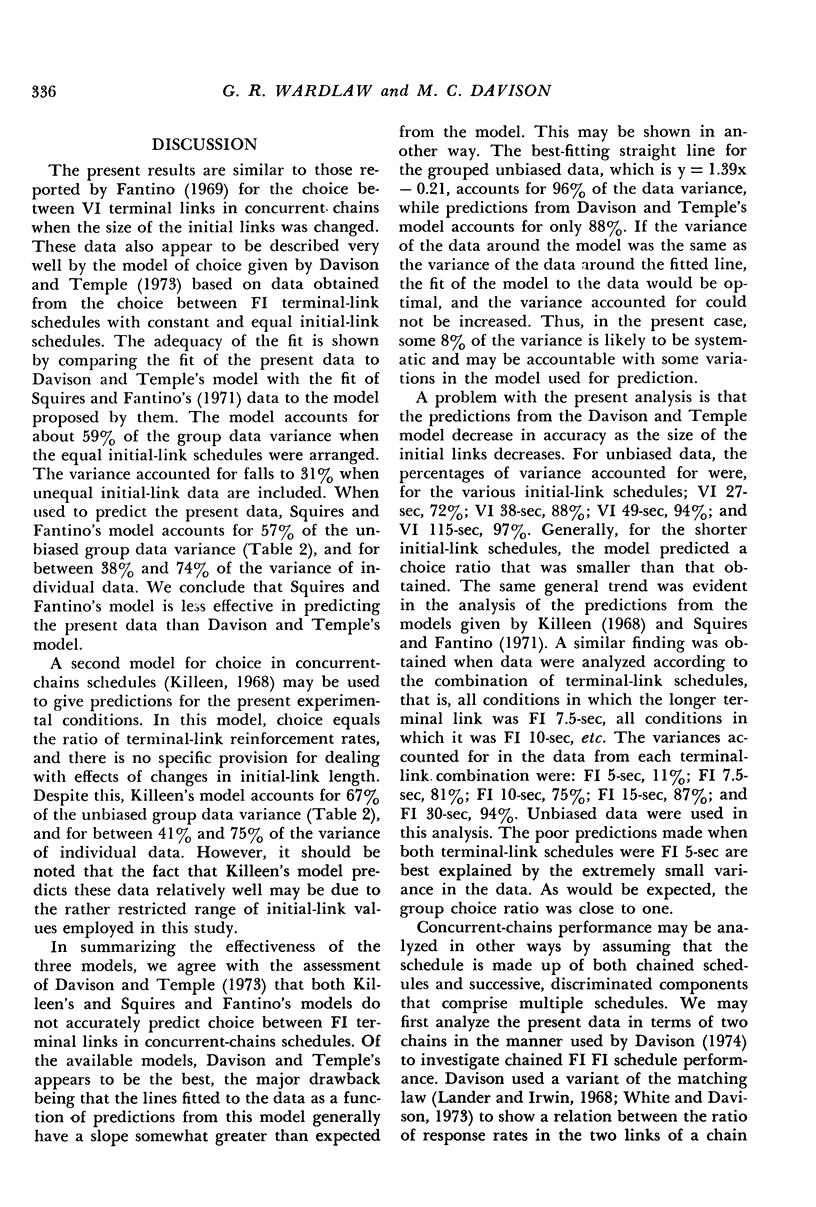
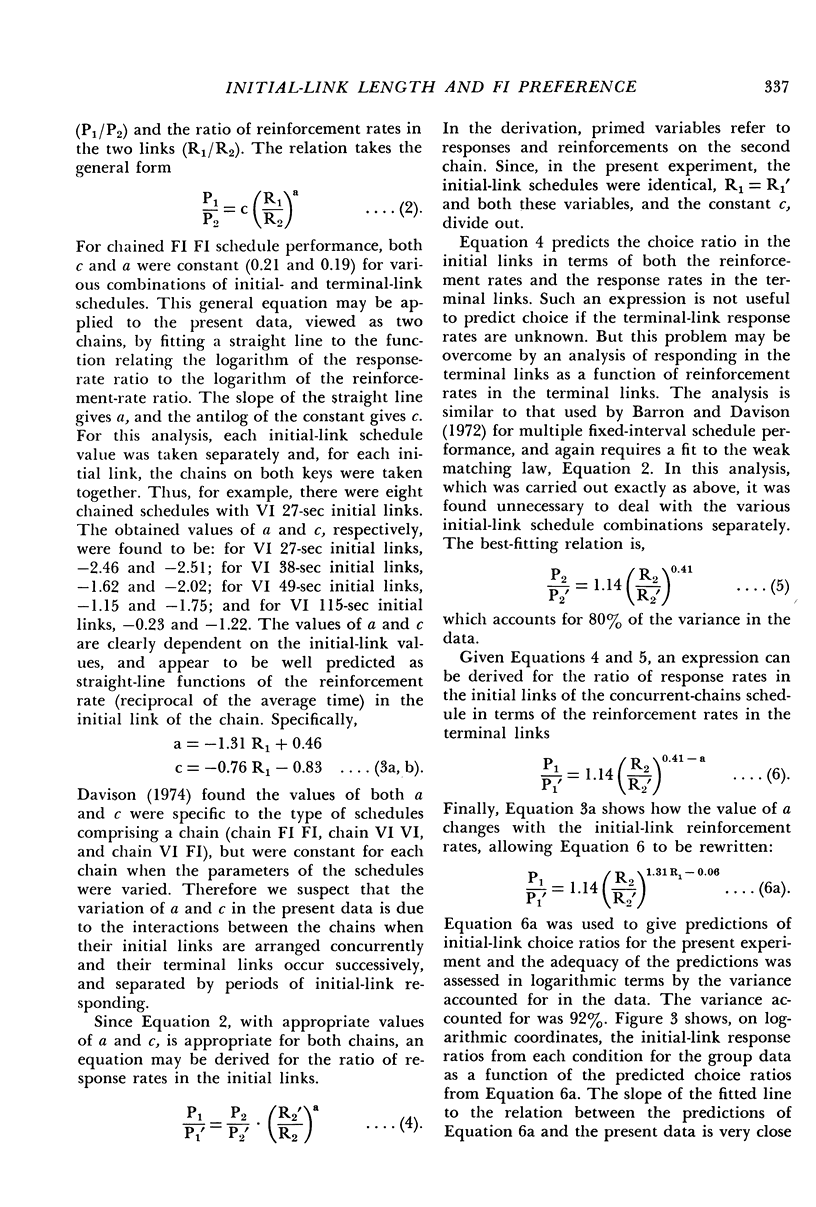
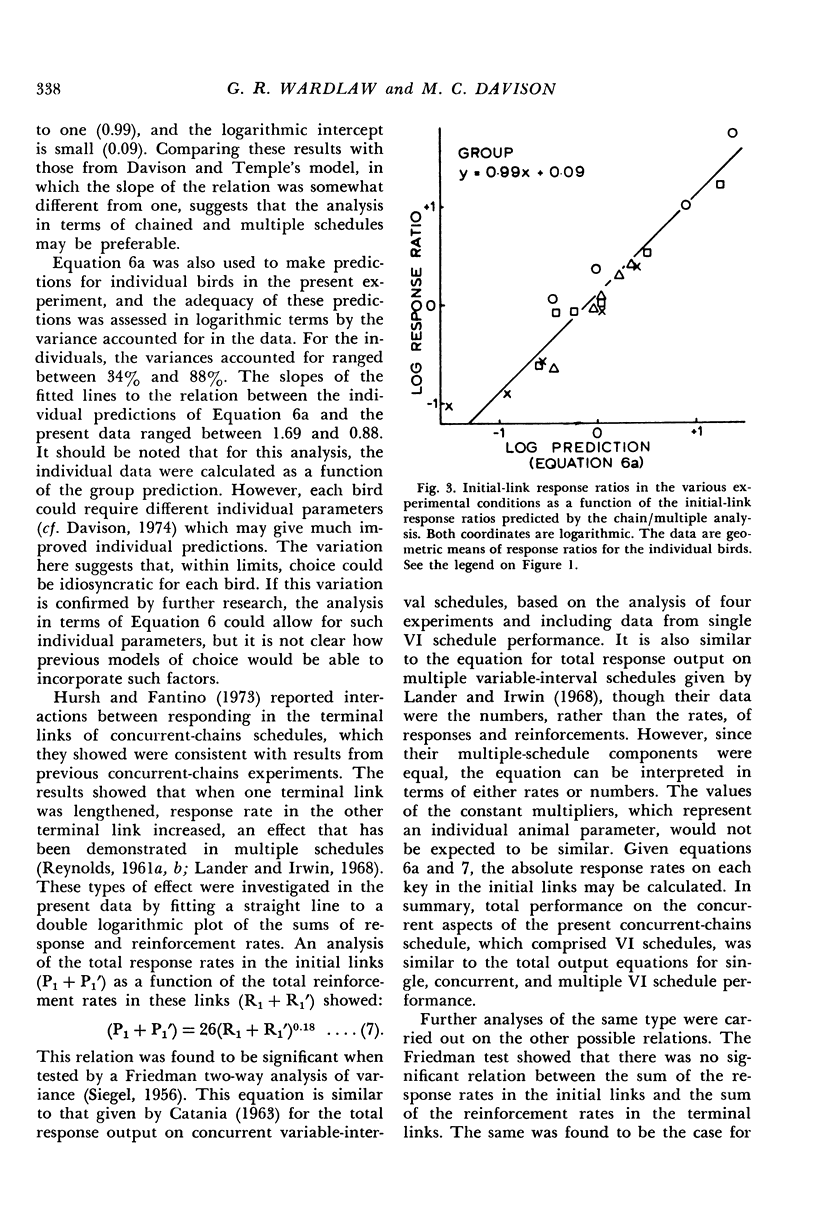
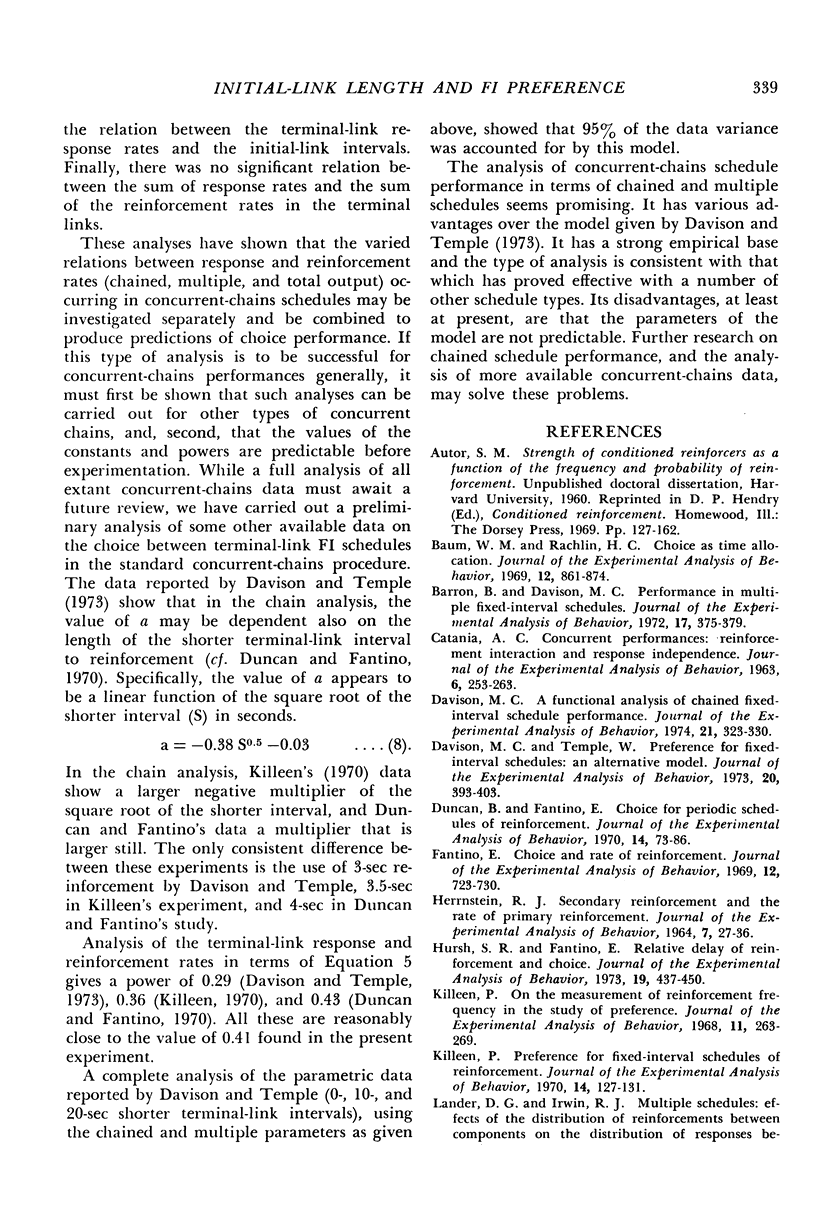
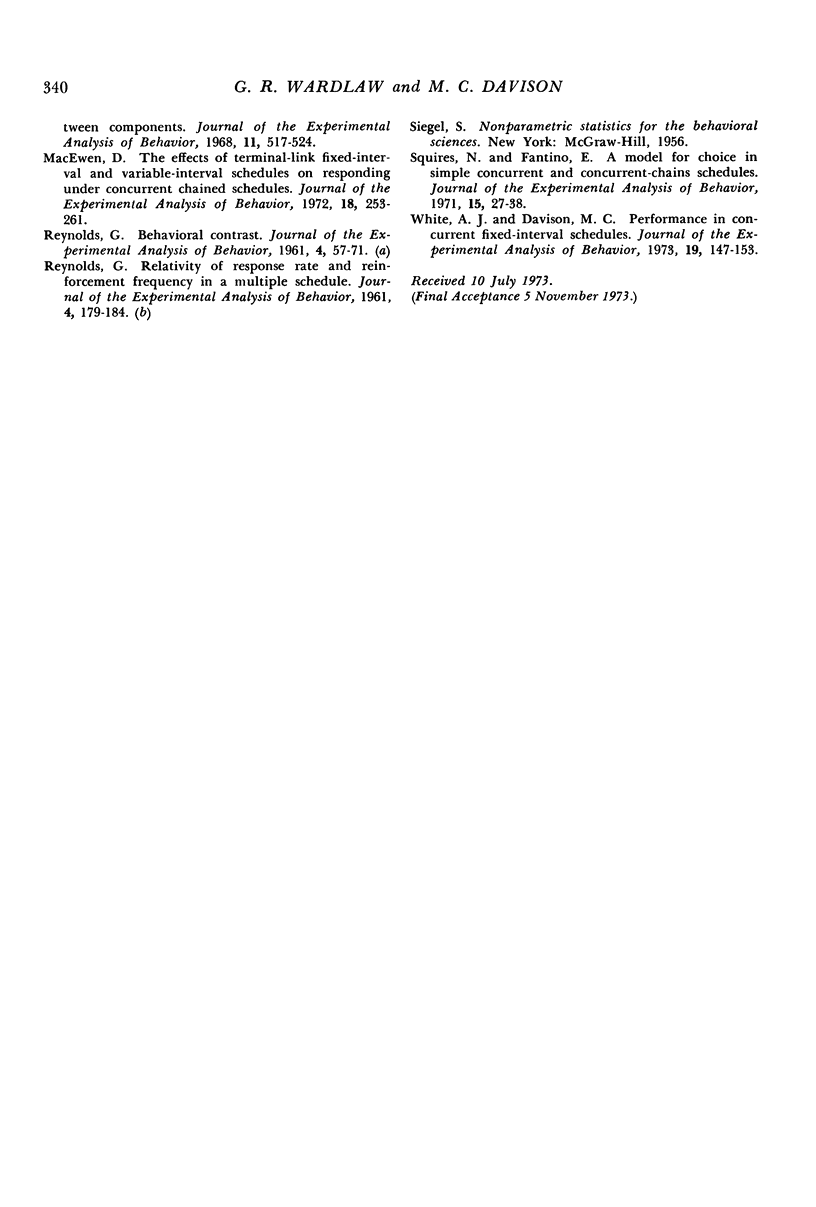
Selected References
These references are in PubMed. This may not be the complete list of references from this article.
- Barron B., Davison M. C. Performance in multiple fixed-interval schedules. J Exp Anal Behav. 1972 May;17(3):375–379. doi: 10.1901/jeab.1972.17-375. [DOI] [PMC free article] [PubMed] [Google Scholar]
- Baum W. M., Rachlin H. C. Choice as time allocation. J Exp Anal Behav. 1969 Nov;12(6):861–874. doi: 10.1901/jeab.1969.12-861. [DOI] [PMC free article] [PubMed] [Google Scholar]
- CATANIA A. C. Concurrent performances: reinforcement interaction and response independence. J Exp Anal Behav. 1963 Apr;6:253–263. doi: 10.1901/jeab.1963.6-253. [DOI] [PMC free article] [PubMed] [Google Scholar]
- Davison M. C. A functional analysis of chained fixed-interval schedule performance. J Exp Anal Behav. 1974 Mar;21(2):323–330. doi: 10.1901/jeab.1974.21-323. [DOI] [PMC free article] [PubMed] [Google Scholar]
- Davison M. C., Temple W. Preference for fixed-interval schedules: an alternative model. J Exp Anal Behav. 1973 Nov;20(3):393–403. doi: 10.1901/jeab.1973.20-393. [DOI] [PMC free article] [PubMed] [Google Scholar]
- Duncan B., Fantino E. Choice for periodic schedules of reinforcement. J Exp Anal Behav. 1970 Jul;14(1):73–86. doi: 10.1901/jeab.1970.14-73. [DOI] [PMC free article] [PubMed] [Google Scholar]
- Fantino E. Choice and rate of reinforcement. J Exp Anal Behav. 1969 Sep;12(5):723–730. doi: 10.1901/jeab.1969.12-723. [DOI] [PMC free article] [PubMed] [Google Scholar]
- HERRNSTEIN R. J. SECONDARY REINFORCEMENT AND RATE OF PRIMARY REINFORCEMENT. J Exp Anal Behav. 1964 Jan;7:27–36. doi: 10.1901/jeab.1964.7-27. [DOI] [PMC free article] [PubMed] [Google Scholar]
- Hursh S. R., Fantino E. Relative delay of reinforcement and choice. J Exp Anal Behav. 1973 May;19(3):437–450. doi: 10.1901/jeab.1973.19-437. [DOI] [PMC free article] [PubMed] [Google Scholar]
- Killeen P. On the measurement of reinforcement frequency in the study of preference. J Exp Anal Behav. 1968 May;11(3):263–269. doi: 10.1901/jeab.1968.11-263. [DOI] [PMC free article] [PubMed] [Google Scholar]
- Killeen P. Preference for fixed-interval schedules of reinforcement. J Exp Anal Behav. 1970 Sep;14(2):127–131. doi: 10.1901/jeab.1970.14-127. [DOI] [PMC free article] [PubMed] [Google Scholar]
- Lander D. G., Irwin R. J. Multiple schedules: effects of the distribution of reinforcements between component on the distribution of responses between conponents. J Exp Anal Behav. 1968 Sep;11(5):517–524. doi: 10.1901/jeab.1968.11-517. [DOI] [PMC free article] [PubMed] [Google Scholar]
- Macewen D. The effects of terminal-link fixed-interval and variable-interval schedules on responding under concurrent chained schedules. J Exp Anal Behav. 1972 Sep;18(2):253–261. doi: 10.1901/jeab.1972.18-253. [DOI] [PMC free article] [PubMed] [Google Scholar]
- REYNOLDS G. S. Behavioral contrast. J Exp Anal Behav. 1961 Jan;4:57–71. doi: 10.1901/jeab.1961.4-57. [DOI] [PMC free article] [PubMed] [Google Scholar]
- REYNOLDS G. S. Relativity of response rate and reinforcement frequency in a multiple schedule. J Exp Anal Behav. 1961 Apr;4:179–184. doi: 10.1901/jeab.1961.4-179. [DOI] [PMC free article] [PubMed] [Google Scholar]
- Squires N., Fantino E. A model for choice in simple concurrent and concurrent-chains schedules. J Exp Anal Behav. 1971 Jan;15(1):27–38. doi: 10.1901/jeab.1971.15-27. [DOI] [PMC free article] [PubMed] [Google Scholar]
- White A. J., Davison M. C. Performance in concurrent fixed-interval schedules. J Exp Anal Behav. 1973 Jan;19(1):147–153. doi: 10.1901/jeab.1973.19-147. [DOI] [PMC free article] [PubMed] [Google Scholar]


